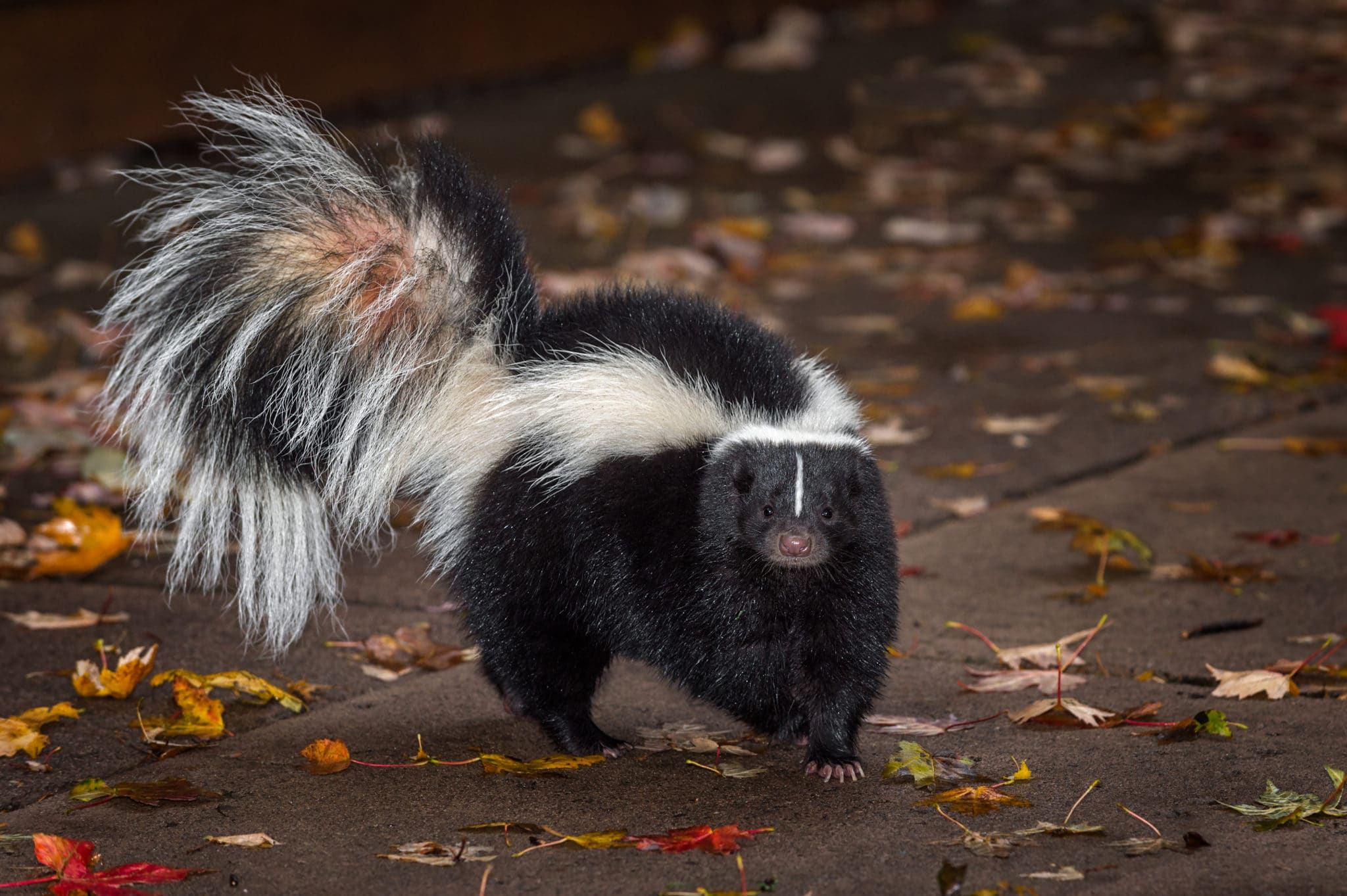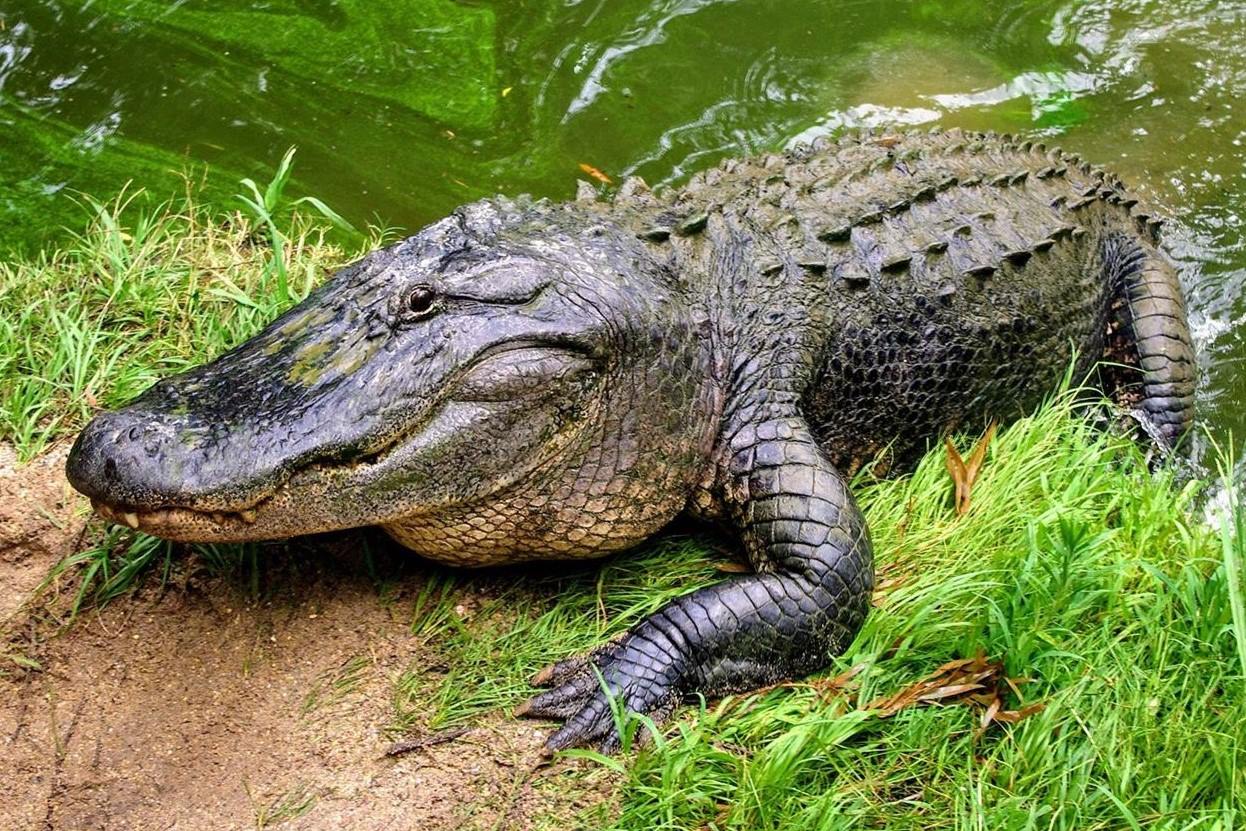

Science
The Surprising Reason You Smell Skunk At Night
Published: February 22, 2024
Discover the science behind why you smell skunk at night and what causes this surprising phenomenon. Uncover the reasons for the nighttime skunk odor with scientific insights.
(Many of the links in this article redirect to a specific reviewed product. Your purchase of these products through affiliate links helps to generate commission for Noodls.com, at no extra cost. Learn more)
Table of Contents
Introduction
Have you ever experienced the pungent, unmistakable odor of a skunk lingering in the air during the stillness of the night? The unique scent of skunk spray has the power to captivate our senses and evoke a range of reactions, from curiosity to outright disgust. However, there is a surprising reason behind why the smell of skunk often permeates the night air, and it's not just a matter of chance.
As nocturnal creatures, skunks possess fascinating behaviors and defense mechanisms that make their presence particularly noticeable after the sun sets. While encountering this malodorous scent may not be the highlight of anyone's evening, understanding the science behind why skunk odors seem to be more prevalent at night can provide valuable insights into the natural world around us.
In the following sections, we will delve into the intriguing world of skunks, exploring the unique characteristics of their scent, their nocturnal habits, and the scientific mechanisms behind their potent defense strategy. By shedding light on these aspects, we can gain a deeper appreciation for the role skunks play in their ecosystems and the remarkable adaptations that enable them to thrive under the cover of darkness.
Understanding the Skunk Smell
The distinctive odor associated with skunks is a result of a complex chemical defense mechanism that sets them apart from other creatures in the animal kingdom. Skunk spray, often described as a noxious blend of sulfur and other compounds, is primarily produced by specialized glands located near the base of the skunk's tail. These glands contain a potent secretion that can be forcefully expelled as a form of protection when the skunk feels threatened.
The composition of skunk spray is what gives it its notorious reputation. The primary component responsible for the offensive smell is a group of sulfur-containing chemicals known as thiols. These compounds are notorious for their strong, unpleasant odor, which can linger in the surrounding environment for a prolonged period. In addition to thiols, skunk spray may also contain other volatile compounds, further contributing to its lingering and pervasive nature.
When released, the skunk's spray can reach distances of up to 10 feet with remarkable accuracy, effectively deterring potential predators or perceived threats. The scent is not only potent but also incredibly persistent, making it difficult to ignore or escape once encountered. This potent defense mechanism serves as a crucial survival tool for skunks, allowing them to ward off predators and assert their dominance in their habitats.
The olfactory impact of skunk spray is profound, and its lingering presence can be attributed to the way the volatile compounds disperse and interact with the surrounding environment. The strong, pervasive nature of the skunk smell is a testament to the effectiveness of this defense mechanism, as it serves as a warning to potential threats and a means of safeguarding the skunk's well-being.
Intriguingly, the distinctiveness of the skunk smell also plays a vital role in research and development, particularly in the field of chemical synthesis. Scientists have studied the compounds present in skunk spray to gain insights into the unique properties of thiols and their applications in various industrial and scientific contexts.
Understanding the chemistry and impact of the skunk smell provides a glimpse into the remarkable adaptations that have evolved in these nocturnal creatures. The potent and enduring nature of skunk spray serves as a testament to the ingenuity of nature's defense mechanisms, highlighting the intricate and fascinating ways in which animals have adapted to thrive in their respective environments.
The Role of Nocturnal Behavior
The nocturnal behavior exhibited by skunks plays a pivotal role in shaping their interactions with the environment and other species. As primarily crepuscular and nocturnal creatures, skunks have adapted to thrive under the cover of darkness, leveraging a range of behaviors and physiological characteristics that set them apart from their diurnal counterparts.
One of the key advantages of nocturnal behavior for skunks is the reduced competition for resources. By actively foraging, hunting, and engaging in various activities during the night, skunks can capitalize on an environment that is less crowded and more conducive to their survival. This strategic timing allows them to secure food sources, establish territories, and carry out essential behaviors with minimal interference from diurnal species.
Furthermore, the cover of darkness provides skunks with a heightened sense of security. As primarily nocturnal animals, skunks have evolved to navigate and thrive in low-light conditions, utilizing their keen senses of smell, hearing, and touch to navigate their surroundings and detect potential threats. This heightened sensory awareness enables them to remain vigilant and responsive to their environment, enhancing their ability to detect predators and avoid confrontations.
The nocturnal behavior of skunks also aligns with their natural inclination towards solitude and territoriality. By predominantly conducting their activities under the veil of night, skunks can minimize direct interactions with other species, including humans, thereby reducing the likelihood of conflicts and confrontations. This behavioral adaptation allows skunks to establish and maintain their territories while minimizing the risk of interference from competing individuals or predators.
Additionally, the nocturnal habits of skunks are intertwined with their reproductive and social dynamics. Mating rituals, courtship behaviors, and interactions within social groups often occur during the nighttime hours, contributing to the intricacies of skunk behavior and communication. These nocturnal interactions play a crucial role in shaping the dynamics of skunk populations and the perpetuation of their species.
In essence, the nocturnal behavior of skunks is a multifaceted adaptation that influences their foraging, security, territoriality, and social dynamics. By capitalizing on the cover of darkness, skunks have carved out a niche in their ecosystems, utilizing the unique advantages of nocturnal behavior to thrive and perpetuate their species. This remarkable adaptation provides valuable insights into the diverse strategies employed by animals to navigate and thrive within their respective habitats.
The Science of Skunk Defense
The skunk's defense mechanism is a remarkable display of biological ingenuity, rooted in the intricate interplay of chemistry, physiology, and behavioral adaptations. At the core of this defense strategy lies the potent and enduring nature of skunk spray, a complex blend of chemicals that serves as a formidable deterrent to potential threats.
The primary component responsible for the notorious odor of skunk spray is a group of sulfur-containing compounds known as thiols. These volatile chemicals are notorious for their strong, unpleasant smell, which can linger in the surrounding environment for a prolonged period. When a skunk feels threatened, specialized glands near the base of its tail release this potent secretion, propelling it with remarkable accuracy to distances of up to 10 feet. The lingering and pervasive nature of skunk spray is a testament to the effectiveness of this defense mechanism, serving as a warning to potential threats and a means of safeguarding the skunk's well-being.
The unique composition of skunk spray has garnered significant attention from scientists, who have sought to unravel its chemical intricacies and potential applications. The study of skunk defense mechanisms provides valuable insights into the properties of thiols and their interactions with the environment, shedding light on the intricate chemistry that underpins the distinctive characteristics of skunk spray. Furthermore, the enduring nature of skunk odor has sparked interest in industrial and scientific contexts, where the properties of thiols are studied for potential applications in chemical synthesis and related fields.
Beyond its chemical composition, the delivery mechanism of skunk spray showcases the precision and efficacy of the skunk's defense strategy. By propelling the spray with accuracy and force, skunks can effectively deter predators and perceived threats, establishing a formidable line of defense. This targeted deployment of skunk spray highlights the evolutionary adaptations that have shaped the skunk's ability to ward off potential dangers, underscoring the intricate balance of offense and defense in the natural world.
The science of skunk defense serves as a compelling example of the multifaceted adaptations that have evolved in nocturnal creatures. From the chemical composition of their spray to the precision of its delivery, skunks exemplify the remarkable ways in which animals have harnessed biological mechanisms to thrive in their respective environments. By unraveling the science behind skunk defense, we gain a deeper appreciation for the ingenuity of nature and the diverse strategies that have emerged in the evolutionary tapestry of the animal kingdom.
Conclusion
In conclusion, the pervasive presence of skunk odor during the night is intricately tied to the fascinating interplay of nocturnal behavior, chemical defense mechanisms, and the unique adaptations of these remarkable creatures. The distinctiveness of skunk spray, with its potent blend of sulfur-containing compounds, serves as a formidable deterrent to potential threats, reflecting the intricate chemistry that underpins the skunk's defense strategy. Furthermore, the precision and force with which skunks deploy their spray highlight the evolutionary adaptations that have shaped their ability to thrive under the cover of darkness.
The nocturnal behavior exhibited by skunks further amplifies the impact of their presence at night, providing them with a strategic advantage in securing resources, navigating their environments, and engaging in essential behaviors. By capitalizing on the reduced competition and heightened security offered by the cover of darkness, skunks have carved out a niche in their ecosystems, utilizing their keen senses and behavioral adaptations to thrive and perpetuate their species.
The science of skunk defense offers valuable insights into the intricate mechanisms that govern the interactions between skunks and their environment. From the chemistry of their spray to the behavioral dynamics shaped by their nocturnal habits, skunks exemplify the diverse strategies employed by animals to navigate and thrive within their respective habitats. Moreover, the enduring nature of skunk odor has not only captured the curiosity of scientists but also sparked interest in potential applications in chemical synthesis and related fields, underscoring the far-reaching impact of this unique defense mechanism.
By unraveling the complexities of skunk behavior and defense, we gain a deeper appreciation for the ingenuity of nature and the remarkable adaptations that have evolved in nocturnal creatures. The prevalence of skunk odor at night serves as a testament to the intricate and fascinating ways in which animals have adapted to thrive in their environments, providing a captivating glimpse into the natural world that surrounds us.















